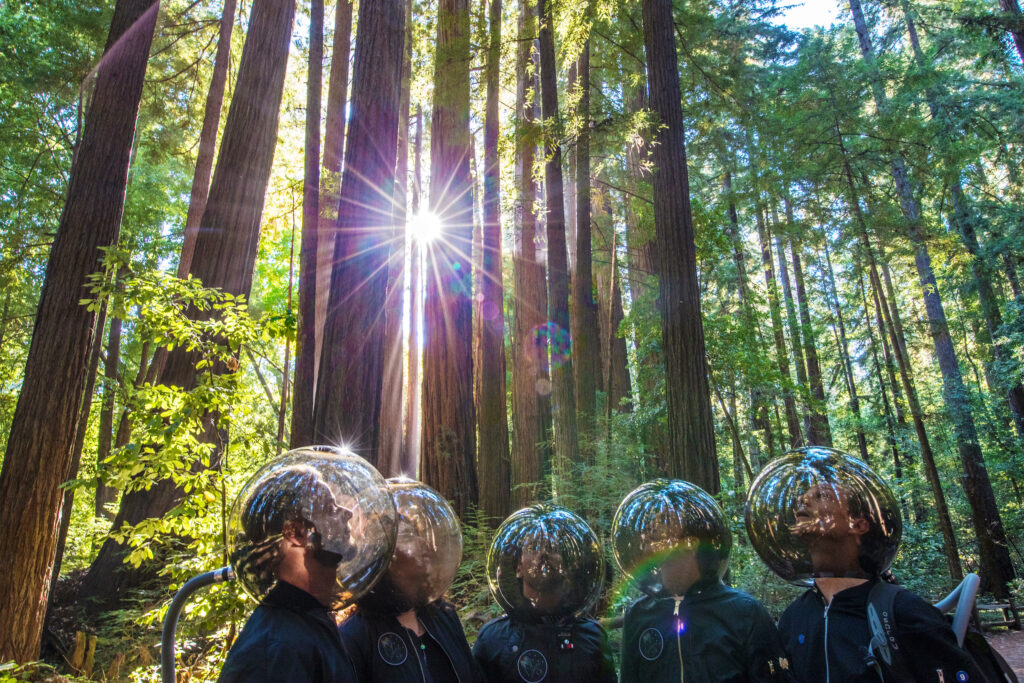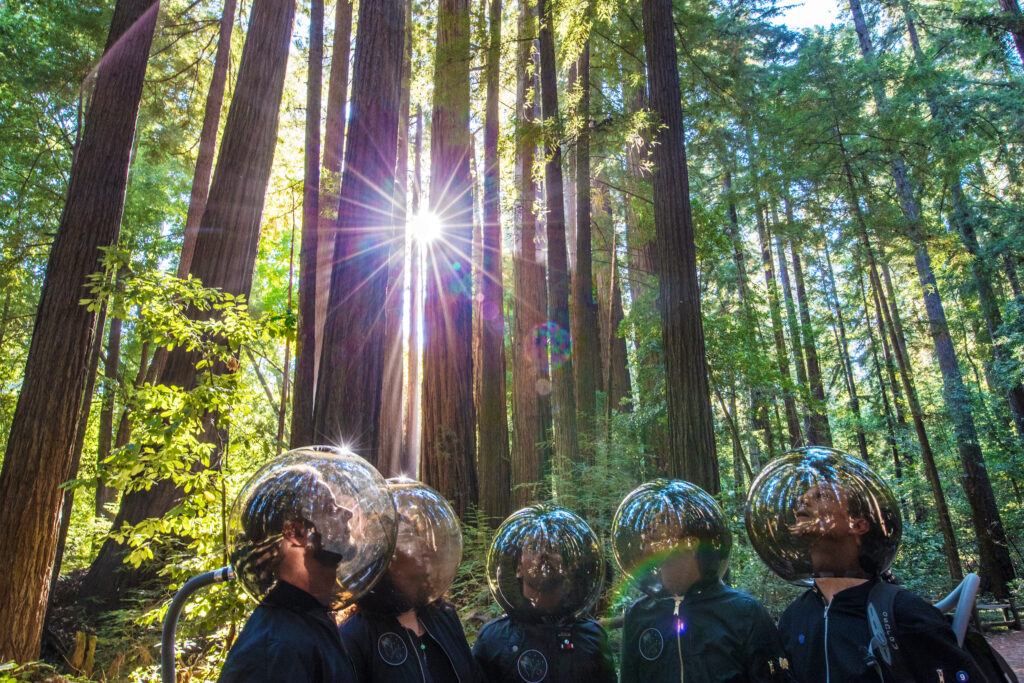
STS9 Unveils Secrets Behind 25 Years of Success
Sound Tribe Sector 9 (STS9) is one of the most successful and decorated touring acts in North America today. Yet, the band admits to its unofficial title of being “The Biggest Band You’ve Never Heard Of.”
“Tribe,” as they are known by fans worldwide, has headlined stages of nearly every major music festival, making repeated, often multi-set stops at the likes of Bonnaroo, Hulaween, Lollapalooza, Outside Lands, and Electric Forest, to name a few. With over two million ticket sales nationwide, STS9 hosted their own Wave Spell Festival in Belden Town, CA, and were inducted into the Red Rocks Hall of Fame in 2017 following their 27th performance at the venue (they’ve headlined it four more times since).
These accomplishments are backed by a rabid enthusiasm and universe of Tribe fan community, who gather IRL around the country for the band’s unique tour stops and subscribe by the thousands to their Bandcamp, an artist-backed music streaming platform. Despite their innumerable accolades and relentless touring, the band is often absent from most commercial airwaves or headlines — instead thriving on the underground community it has built.
In an interview with MP3 MAG, Tribe members Hunter Brown (guitars), Zach Velmer (drums, electronic percussion), Jeffree Lerner (percussion), David Phipps (keyboards, synthesizers), and bass guitarist, Alana Rocklin unveiled how their universal message and attention to the collective experience has allowed them to find success on their own terms — and how they are fueling the fire behind their upcoming LP.
In between marquee festival stops, Tribe culls its traveling cult of fans at natural and immersive venues throughout the country. The group often makes annual hubs out of each run, returning again and again behind different themes that shape the music and experience. This predilection towards immersion and inherent connectivity in all aspects dates back to STS9’s origin.

The group was formed in 1997 in Atlanta, Georgia. While “Sound Tribe” references its nomadic followers and movements, “Sector 9” is derived from a period on the Mayan calendar correlated with boundless creativity. This foundation in cosmic beliefs and an infatuation with creation is something that very much lives on in the band today.
“That story will always be our founding story and always had this inspiration for us,” said Brown, who is perhaps foremost relating the band’s ideology to this sentiment. “We live in this kind of cosmic view. This world, this universe that we’re a part of, it’s something we’ve always been inspired by.”
While each of their eleven studio albums offers a taste of their boundless palette of genre-fluid sound, it hardly puts into context what you witness when each member of Tribe is onstage together. At its best, it’s all one thing — an experience of music and light that’s meant to take you away from whatever you have going on and connect you with something higher.

“The challenge of ‘coining’ STS9’s sound is ultimately the greatest compliment, right?” said Lerner. “We simply play the music that we love, which comes through in the diversity of what we play. There’s constant growth and evolution, not only in our interactions with each other but also our interactions with our instruments.”
Each of its gifted band members possesses masterful prowess on their respective instruments. STS9 follows its ethos by forgoing solos and instead focusing on their combined talent and sound to provide numerous textures to the live show. Tribe’s grooves and soundscapes are brought to life further onstage by vibrant arrays of color, a focus since the band began “projecting on bed sheets” back in 1998, as Lerner puts it.
Today, this optical illusion is led and crafted by Tiberius Benson, the group’s lightning designer and honorary sixth band member.
Joining full-time in 2016, Benson has been synonymous with the STS9 live show, helping bring to life the themes cooked up behind the scenes with a one-of-a-kind light show. None of the programming is time-coded, as Benson coordinates and runs the lightning in real-time while the band performs live.

“The research, time, and energy that he puts into this is equal to what we do and it’s just crazy that you can see it when you come to a show and you can feel it,” said Velmer. “He’s creating energy and releasing energy. He’s doing a lot of that with us with lights. It’s so connected.”
The group further accents this “emotional equity” by donating hundreds of thousands of dollars, countless volunteering hours, and thousands of pounds of food from fans each year. Their efforts have benefitted a range of causes, including victims of Hurricane Katrina, preserving Redwood forests, and fundraising for the Grassroots Outdoor Alliance.
Despite a pandemic or national unrest, Lerner explained that the band’s core founding principles have allowed them to mostly block out the noise and stay genuine to what they do within the project in terms of music.
“I think that we’ve touched on values and principles that endure through the changes of the times,” said Lerner. “We’re not changing our message, the message is still in community and inspiration.”

This “message” can be found in the themes that the band casts throughout its album, song titles and each of its tour stops, especially in its return since the pandemic. Towards the end of 2021, Tribe performed at Napa Valley, California for a two-night run dubbed West of the Moon, which was later followed by their 2022 Atlanta run, East of the Sun.
Each theme pulls from a 19th-century Norwegian folktale, offering a fictional setting where the sun is eternally sinking in the West and the moon is, likewise, forever rising in the east. It has since been threaded through the fiction of Tolkien and canon of Jazz by stewards, such as saxophonist Charlie Parker, and prompts those in tune to keep pushing for what’s important in times of darkness, or crisis.
This preservation in intention has allowed them to not only stay focused but be excited about creating again — as the group revealed they were “90%” finished with their next album.
“We’re just so excited about it,” said Rocklin. “We’ve just been having a really good time in the studio together, so I think that you can hear that and what we’re doing.”

Lacking an “authentic connection” with promoting on social media, the band still has direct ways of hyping up fans through their Bandcamp, where they offer a monthly subscription that gives fans access to every set, and exclusives on merchandise and tickets.
In addition to hearing every set, fans are treated to Tribe’s favorite studio and live cuts like “Bubble Improv” and “Schematics,” which showcase their personal favorite jams as well as teases of what they are currently working on in the studio.
“It isn’t oversharing to say that [fans] are along in the album process,” said David Phipps. “When we write songs, the first thing we’re thinking about is sharing them with the fans, playing them live, and seeing how they evolve from there.”
While the band told MP3 MAG this next album is “hard to put into words,” diehards will be elated at their description of it being the closest thing sonically to what they sound like live. Digging deep into topics, emotions, and styles that meant a lot to them, they’re hoping to push their biggest inspirations and share the energy they have going between the five of them.
“It’s never like, ‘This is the trend and this is just really hot right now.’” Velmer explained. “That’s just not who we or who we’ve ever been. It comes from all of us being in a room together playing music, communicating on our instruments. It’s just very, very organic.”
FOLLOW STS9:






